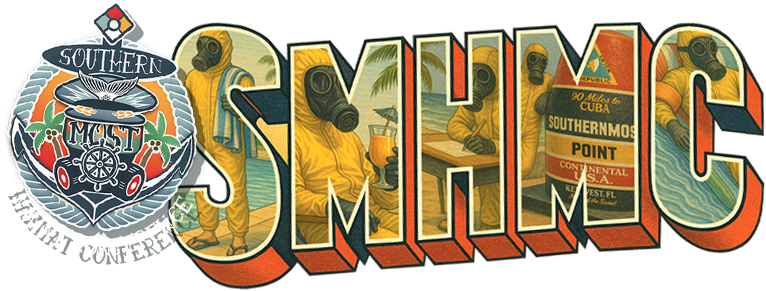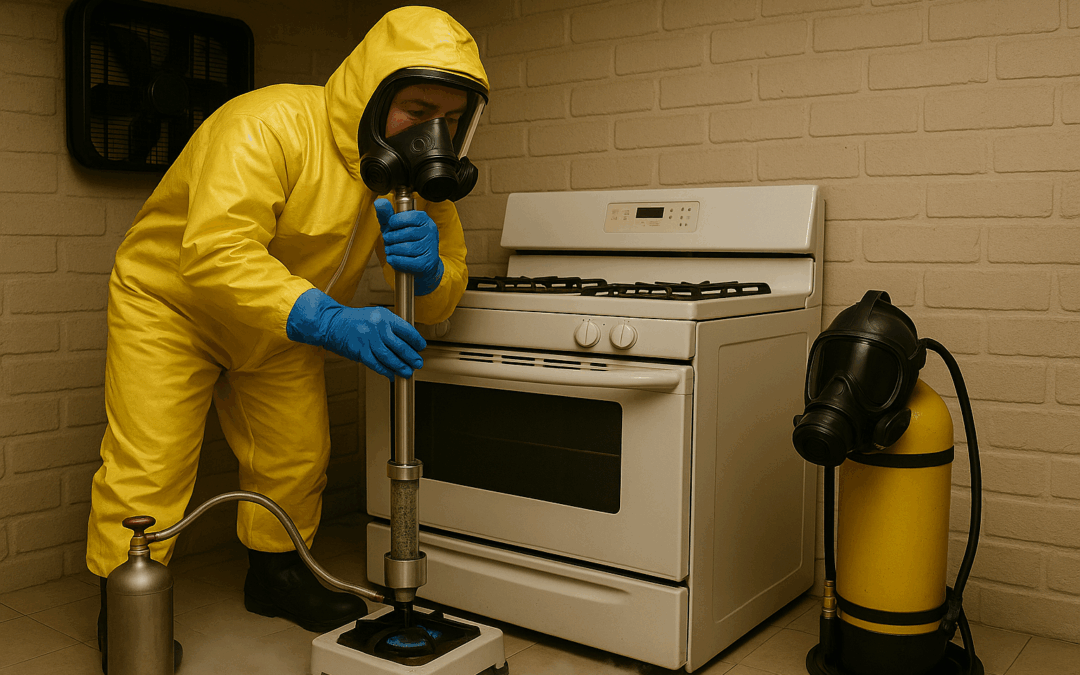“It’s Not Legal, It’s Just Not Illegal”: What First Responders Need to Know About Pot Extraction Labs
I sat down again with Bobby Salvesen and Mike Monaco – two of the sharpest minds in hazmat – to talk about something that’s becoming far too common: pot extraction labs. If you think legal weed means safer setups, think again. As Mike put it, “People didn’t go from homegrown hacks to industrial operations overnight. They just bought 10x more of what they were doing in the garage.”
And that’s where the danger begins.
The Lab Next Door: Why Pot Extraction Isn’t a Small-Time Operation Anymore
Let’s get something out of the way first: extracting THC isn’t inherently dangerous – if done in a lab, by trained professionals, with the right equipment. But that’s not what we’re dealing with most of the time. What we’re seeing is everyday folks running illegal or quasi-legal extraction operations in kitchens, basements, and sheds.
They’re doing it with canisters of butane. In case that doesn’t ring alarm bells, Bobby laid it out: “You’re talking about dumping a full spray paint can of butane into a PVC tube, indoors, and then using a stove to boil it off. What could go wrong, right?”
Butane: The Cheap, Effective – and Explosive – Solvent of Choice
So why butane? Because it works. It’s cheap, it’s easy to get (hello, lighter refills), and it’s incredibly effective at pulling THC from plant material. But it’s also extremely flammable and heavier than air – which means it pools on the ground, unseen and ready to ignite with even the smallest spark.
Mike explained the chemistry with a firefighter’s touch: “Picture your gas saw after it cuts through a tar roof. You drop that blade into diesel to clean it. That’s basically what they’re doing – using a hydrocarbon solvent to pull THC off the plant.”
And that solvent – when used in unventilated areas – creates a near-perfect setup for an explosion. Many of the labs responders walk into are filled with butane vapor that sits inches off the floor, invisible to the eye but ready to light the whole place up.
Flash, Boom, Burn: How DIY Labs Go from Stupid to Deadly
Here’s how it happens:
- They set up a basic PVC or glass tube.
- Dump in weed, fill it with butane.
- Let the THC drip out.
- Then, because waiting is hard, they apply heat – usually a kitchen stove – to “speed it up.”
That’s where everything goes to hell.
“It’s the YouTube effect,” said Bobby. “Watch enough videos of people blowing themselves up and you’ll start your checklist backwards: okay, don’t do that.”
And these explosions aren’t just backyard fireworks. Butane explosions are forceful enough to flatten buildings, cause third-degree burns, or worse. The labs often look innocent – just some kitchen equipment, glassware, and a few pens – but they’re ticking time bombs.
Meter Low, Go Slow: What Responders Need to Watch For
One of the most important points they made was about monitoring. If you’re going into one of these labs, your meter needs to be basically dragging the floor. Butane is that heavy.
Mike offered a great tip: “Just let your meter probe drag across the ground. You’re not going to find it knee-high. It’s hugging the baseboards.”
They recommend metal oxide sensors (in addition to standard LEL meters) for detecting low levels of flammable gases. While LEL meters only trigger at 10% of a gas’s explosive range, metal oxide sensors can give you that early heads-up that something’s brewing before your meter starts screaming.
Fans Aren’t Always Your Friend
Ventilation is critical – but it has to be done smart. You can’t just stick a fan in the room and hope for the best.
“If you push air in without a place for it to go,” Bobby said, “you’re just stirring the soup.”
They stressed the importance of using intrinsically safe fans (which are built to prevent sparks), ideally with tubing that can “suck” vapors out from low areas. But even with those, know this: if your fan’s been bouncing around the truck for years, its certification might not mean much anymore.
PPE: Bunker Gear and SCBA or Bust
This is not the place to be underdressed. Both Bobby and Mike were clear: bunker gear and SCBA are mandatory. The flash potential is huge, and inhaling butane or ethanol vapors is no joke. Even acetone and isopropyl alcohol, other solvents used in extractions, can create flammable environments.
And don’t forget the basics: if it’s in a sealed container, leave it alone. If it’s leaking, stop it if you can. Change the air and stop the leak – that’s your mission.
From DIY to Industrial: Two Different Worlds, Same Hazards
Not every lab is a backyard project. Some are industrial-scale, with stainless steel machines that reclaim solvents and hit 95–97% extraction efficiency. But with bigger setups come new risks: pressurized tanks, caustics, acids, and extreme heat. Responders need to treat these like chemical plants – not weed labs.
“These machines get hot,” said Bobby. “Like, melt-your-gloves-off hot. You’ve got to be ready for pressure, leaks, even booby traps. We’ve seen it all.”
Real-World Takeaways
This episode gave us some hard truths and practical advice:
- Pot extraction is everywhere, and the majority of it is being done unsafely.
- Butane is incredibly dangerous, especially in enclosed spaces.
- Ventilation has to be strategic, not reactionary.
- Always meter low. Always.
- PPE is non-negotiable.
And maybe most important: understand the process, even if you’re not doing it. You can’t respond to what you can’t recognize.
If you’re in hazmat, fire, or law enforcement, you will see one of these labs. And if you’re not ready, it can go south fast. Keep your meters low, your eyes open, and your PPE on.
And if you need a refresher on how dangerous butane can be, just hit YouTube. Nothing drives the point home like a dude losing his eyebrows on camera.


